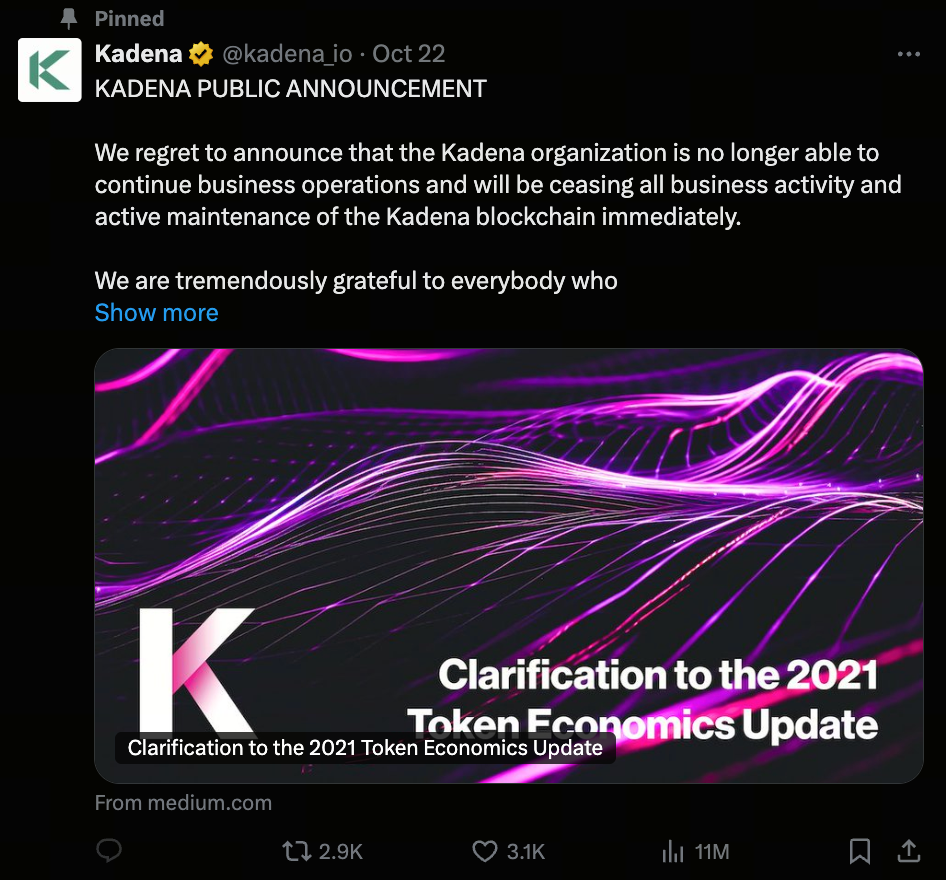Kadena Ceases Operations but Future Lies with Community
Sudden Shutdown Announcement Shocks the Market

(Source: kadena_io)
On October 22, 2025, Kadena’s team abruptly announced the immediate shutdown of company operations. The news sent shockwaves through the cryptocurrency market, as Kadena’s native token, KDA, plunged over 55% in just a few hours, wiping out nearly all of its gains from the past five years—an unusually dramatic price collapse for a blockchain project.
In its official statement, Kadena attributed the shutdown to adverse market conditions and unsustainable business operations. While a limited number of staff will remain to assist with the transition, primary operations will be handed over to the community, ensuring continued blockchain operation.
Community Takes Over: Kadena’s Decentralized Future
Kadena’s infrastructure is built on decentralized Proof of Work (PoW), allowing independent miners and developers to maintain the chain even after the company’s exit. Kadena has released an updated binary release, enabling blockchain operation without centralized oversight, and encourages node operators to update promptly to help safeguard network stability.
Kadena will continue to distribute mining incentives: approximately 566 million KDA will be issued through 2139, and the team plans to unlock 83.7 million tokens currently locked by 2029. This ensures the blockchain will maintain stable network resources despite the team’s departure.
The Test of Decentralized Governance
The announcement also calls for community participation in governance and network maintenance, marking a possible shift to a community-led decentralized governance model. The ecosystem’s future hinges on whether miners, developers, and users are willing to jointly maintain the infrastructure. Otherwise, Kadena may become a historical footnote.
This event reminds the market that even mature blockchain companies can succumb to persistent market pressures and operational challenges. Kadena’s network will persist, but its fate now depends entirely on its community.
To learn more about Web3, click to register: https://www.gate.com/
Summary
Kadena’s shutdown is not the end, but rather a new stage of evolution—from corporate management to community governance. This transition will put decentralized governance to the test and offers valuable insights for other blockchain projects: even if the core team steps away, a committed community can keep the project alive.
Related Articles

2025 BTC Price Prediction: BTC Trend Forecast Based on Technical and Macroeconomic Data

Flare Crypto Explained: What Is Flare Network and Why It Matters in 2025

Pi Coin Transaction Guide: How to Transfer to Gate.com

How to Use a Crypto Whale Tracker: Top Tool Recommendation for 2025 to Follow Whale Moves

What is N2: An AI-Driven Layer 2 Solution


